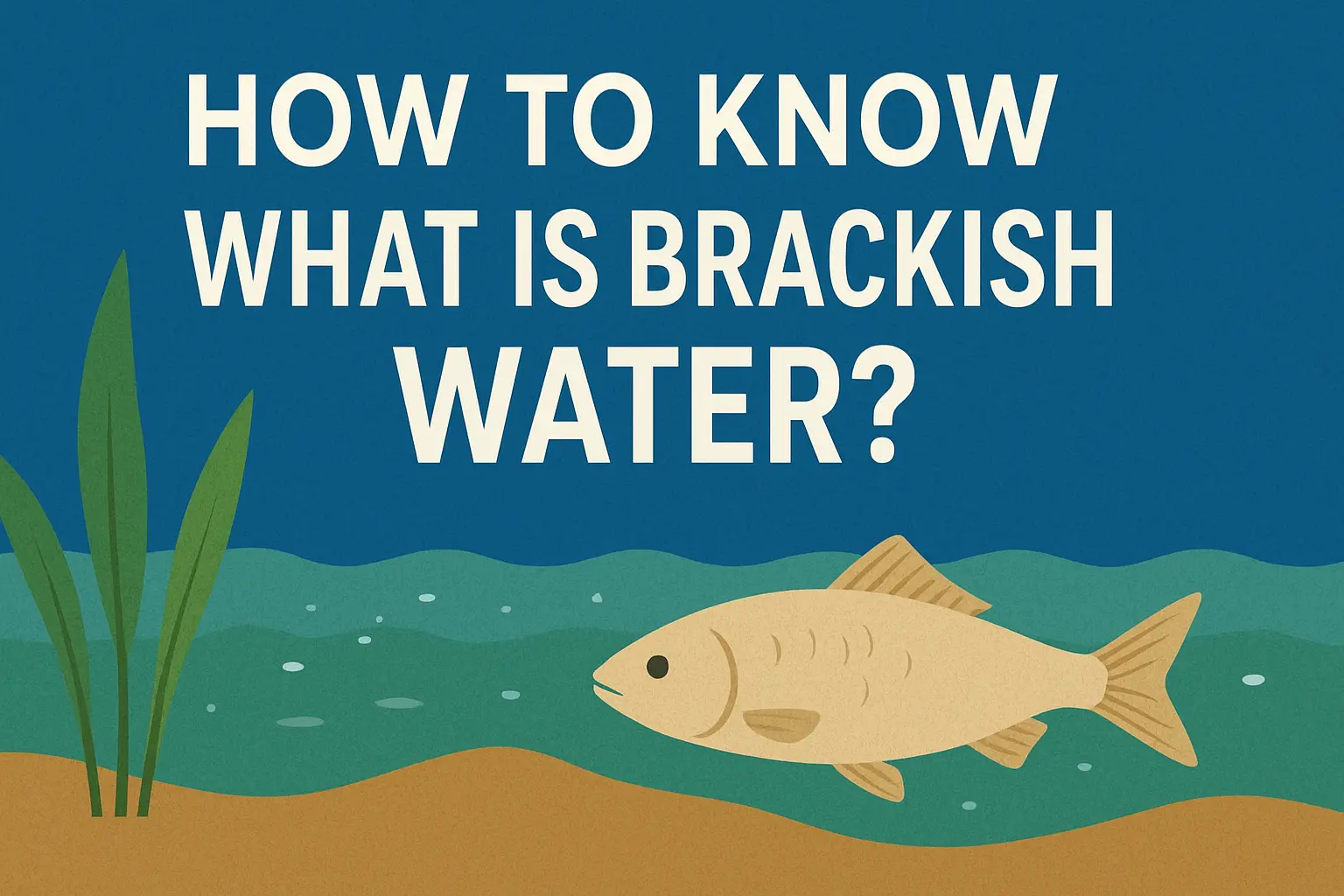Ever stood by a river that meets the sea and wondered, “Is this fresh or salty?” That’s where brackish water comes in. As someone who has spent time around fishing communities and water bodies, I can tell you it’s a fascinating middle ground that most people don’t know much about.
So, What Exactly Is Brackish Water?
Brackish water is a blend of freshwater and saltwater. Its salinity is higher than rivers but lower than oceans. Think of it as the “in-between zone” of water types.
You’ll often find it in estuaries, deltas, coastal lagoons, and mangroves, basically where rivers kiss the sea. For example, Karachi’s Korangi Creek or the Nile Delta are classic brackish water spots.

Fishermen know it well because certain species like mullet, prawns, and crabs thrive here. But for the average person, it’s not always obvious if the water they’re looking at is brackish or not. So how do you know? Let’s break it down.
What Does Brackish Water Look and Taste Like?
If you scoop up some brackish water, you’ll usually notice:
- A greenish or brownish color (not as clear as mountain streams).
- A slight salty taste, but not as strong as seawater.
- Sometimes a shiny film on the surface, especially in calm areas.
From my own experience near estuaries, the first sip (yes, I’ve tasted it before while fishing) feels strange, like regular water with a salty kick. Not something you’d want to drink, but enough to remind you it’s not pure freshwater.
Here’s a simple example: if you put a freshwater fish like a tilapia straight into brackish water, it probably won’t survive long because of the salt content. On the flip side, species like shrimp and mullet thrive in it.
How to Tell If Water Is Brackish
There are a few practical ways you can figure it out:
- Taste Test: Not the most scientific, but yes, it tastes slightly salty.
- Color Check: Murky green or brown is common.
- Location: If you’re near an estuary or river mouth, chances are high.
- Hydrometer Reading: A tool anglers use to measure salinity. Freshwater is under 1.005 specific gravity, seawater is around 1.025, and brackish falls somewhere in between.
- pH Test: Brackish water usually has a pH between 6.5 and 8.5.
So if you’re curious while fishing or farming, a cheap hydrometer or pH kit can give you a clear answer without guessing.
Brackish Water vs Freshwater (What’s the Difference?)
Here’s a quick comparison:
| Feature | Freshwater | Brackish Water | Seawater |
|---|---|---|---|
| Salinity | Less than 0.5 ppt | 0.5 – 30 ppt | ~35 ppt |
| Color | Usually clear | Greenish/brownish | Blue/green |
| Drinkable? | Yes | No | No |
| Common Habitats | Lakes, rivers | Estuaries, mangroves, deltas | Oceans, seas |
| Aquatic Life | Carp, trout | Mullet, shrimp, crabs | Tuna, dolphins |
The main takeaway? Freshwater is safe to drink, seawater is too salty, and brackish water sits awkwardly in the middle, great for certain ecosystems but not for your water bottle.
Why Is Brackish Water Important?
Even though you can’t drink it, brackish water plays a huge role in nature:
- Breeding grounds for fish and shrimp.
- Nutrient-rich for mangroves and aquatic plants.
- Natural buffer against coastal erosion.
I’ve noticed many fishermen even use brackish ponds for aquaculture because the mineral content supports healthier shrimp and crab growth.
Signs You’re Looking at Brackish Water
Here’s a quick checklist you can use next time you’re near a water body:
- The water looks murky, brown, or green.
- You’re near a river mouth, estuary, or mangrove.
- The taste is mildly salty.
- Fish species are different from normal river fish.
- A hydrometer or pH test shows in-between levels.
Ever noticed how crabs and shrimps are often found near river mouths? That’s a dead giveaway that you’re looking at brackish water.
Final Words
Brackish water isn’t something you notice every day, but once you know what to look for, it’s easy to spot. It’s that middle ground between rivers and seas, salty enough to be unique, but not quite ocean water.
If you’re ever fishing near a delta or mangrove, pay attention to the water’s taste, color, and location. You might just discover you’re standing by a brackish wonderland full of life.
Remember, it may not be drinkable, but it’s one of nature’s most important habitats. And once you recognize it, you’ll never see coastal water the same way again.
If you found this guide useful, check out my other blogs on water, fishing, and nature, you’ll pick up something new every time.
FAQs
1. Can humans drink brackish water?
Not safely. It’s too salty for direct consumption without desalination.
2. Where can I commonly find brackish water?
In estuaries, mangroves, coastal lagoons, and places where rivers meet the sea.
3. Can freshwater fish survive in brackish water?
No, most can’t. Only certain adaptable species manage to survive.
4. What’s the pH of brackish water?
Usually between 6.5 and 8.5.
5. Is brackish water good for farming?
Not for crops, but it’s excellent for aquaculture like shrimp farming.
